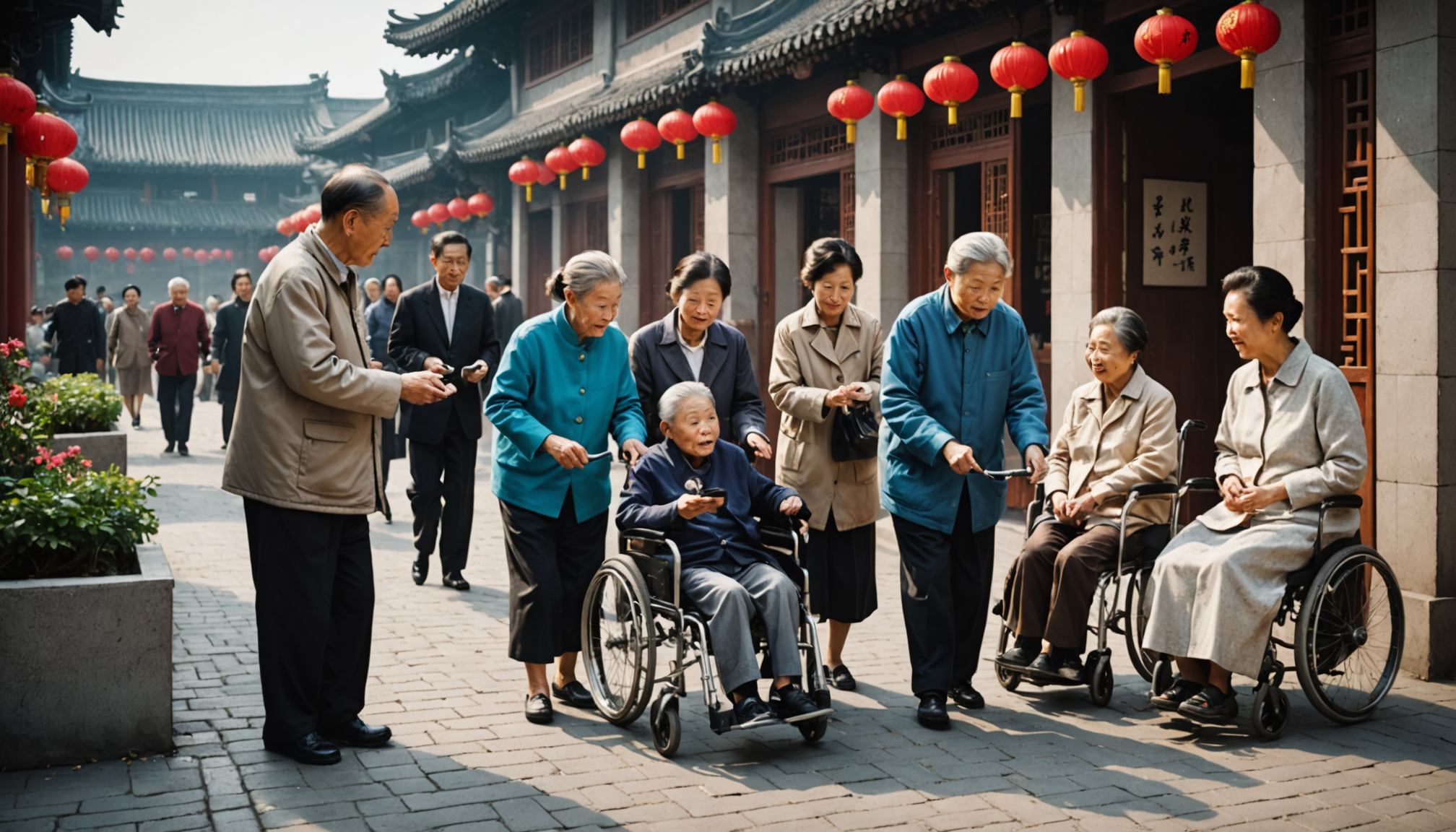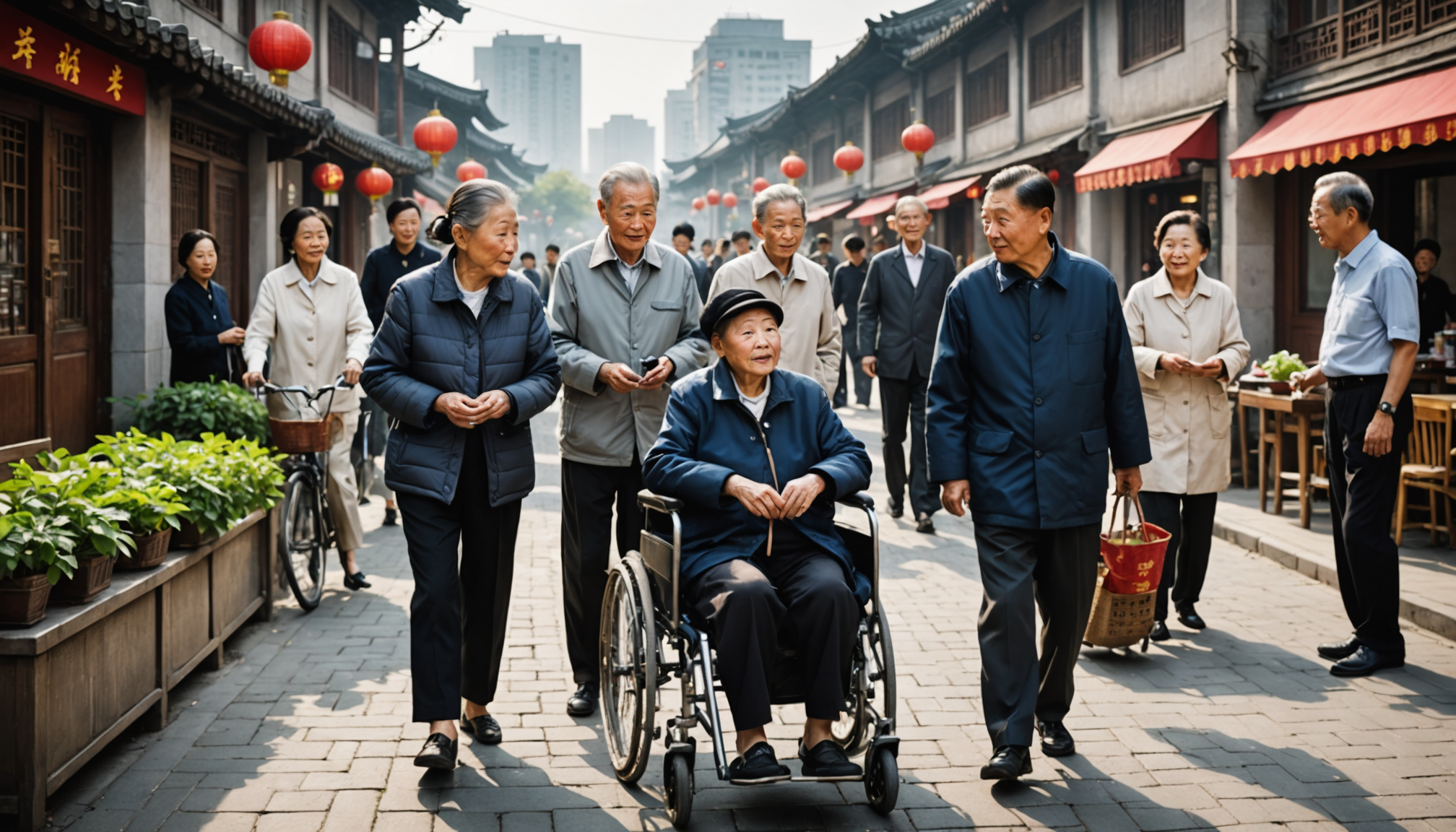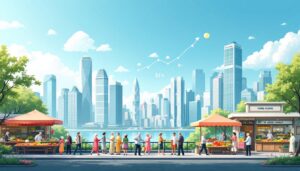China, in full transformation, is resolutely turning towards the future to face the challenges of a aging population. This adaptation is part of the growth of a silver economy, which aims to meet the varied needs of seniors. With nearly 300 million people aged over 60, the country must redouble its efforts to develop appropriate services and infrastructure, while improving quality of life of this growing age group. The interaction between innovation, technology And well-being of seniors becomes essential, marking a new era shaped by the rich but often valuable life experience of older citizens.
There China faces a major challenge with the aging of its population, which is reaching alarming proportions. In response, the country is moving towards the creation of a silver economy, aiming to meet the specific needs of its seniors. This initiative includes the development of services and of products adapted, such as geriatric care, housing alternatives and innovative technological solutions to improve the quality of life of older people. In addition, the government encouragessenior engagement in voluntary activities, while seeking to optimize the system of retirement to manage the economic impact of this demographic change. This transition towards silver economy should not only improve the living conditions of veterans, but also boost long-term economic growth.

Table des matières
ToggleChina faces the challenge of aging
At the heart of the rise of elderly population in China, the silver economy is emerging as a significant response to the challenges of the future. Indeed, while the number of people aged 60 and over has already reached 297 million, or approximately 21.1% of the total population, the country must quickly adjust to these changes. The challenge is not only to guarantee care services adapted, but also to stimulate the economy to support this growing population. While the demographic context seems alarming, a unique opportunity is emerging with the blossoming of a market oriented towards seniors.
the new initiatives of the silver economy
China is implementing various initiatives to meet the specific needs of its aging population. This includes the development of wellness programs focused on seniors, such as health services accessible and quality. Additionally, companies are beginning to design innovative products to improve the daily lives of older adults, taking into account their unique needs. This transformation is also accompanied by an adaptation of the labor market, where retirees are encouraged to volunteer, thus bringing a wealth of valuable experience.
the economic and social impact of the aging population
Demographic aging has profound repercussions onChinese economy, particularly on the way in which resources are allocated. With a population of more than 400 million elderly people expected by 2050, the country must quickly review its strategies. A social protection strengthened and pension reforms are now at the heart of government concerns. At the same time, the emergence of a real silver economy could help stimulate growth, while ensuring a better quality of life for seniors. The future of this economic El Dorado is in the hands of those who will be able to innovate and adapt their services to the expectations of this new generation of seniors.
China’s transformation in the face of the challenge of aging
The demographic transition that China is experiencing, marked by a rapid aging of its population, requires significant adjustments in many sectors. The growing share of elderly people, estimated at more than 21% of the population within a few years, calls for a reassessment of economic and social policies. Thus, China is moving towards a silver economy, seeking to capitalize on the resources and potential of seniors. This strategic change involves investment in adapted infrastructure and services that specifically meet the needs of older people.
Companies are also responding to this phenomenon, developing products and services that cater to this demographic. New opportunities are emerging in the field of geriatric care, assistive technologies and leisure activities for seniors. Emphasis is placed on creating supportive environments that encourage the independence and well-being of seniors. At the same time, public policies are emerging to improve the system of retirement and strengthen social protection, to reduce inequalities and vulnerabilities among this growing population.
Furthermore, the engagement of seniors in voluntary and community activities is becoming more important, not only for their personal well-being but also for society as a whole. This phenomenon marks a step towards social inclusion broader, promoting intergenerational dynamics. Therefore, China’s proactive approach to these demographic challenges is both a response to current challenges and an opportunity to reinvent the country’s economic and social fabric for the future.








